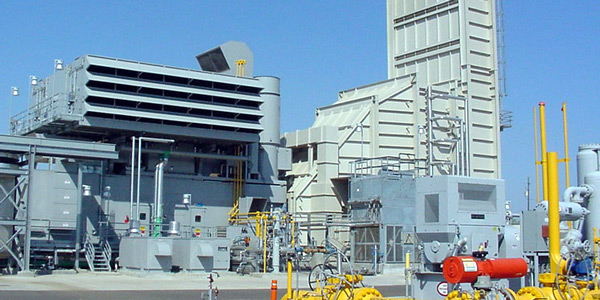By Robert Mullin
CAISO wants to use an out-of-market measure to keep two Northern California gas-fired peaking plants operating after their long-term contracts expire in December.
The ISO is seeking to designate Calpine’s Yuba City and Feather River plants as reliability-must-run resources after identifying that both 47-MW peakers will be needed to support local grid reliability after they fall off their current contracts with Pacific Gas and Electric, which manages the service territory where the plants are located.
The issue arose last November when Calpine notified CAISO that expiring operating agreements would require the company to shut down four of its combustion turbine peakers.
Calpine asked CAISO to study whether loss of the units would cause grid reliability problems. The company said that its capital outlay and resource planning requirements required that it learn of any reliability need for the plants before this fall, when the ISO would release its 2018 resource adequacy assessment. Such a determination would make the plants eligible for longer-term resource adequacy payments under CAISO’s capacity procurement mechanism (CPM).
“On that basis, we did do the review that was requested and concluded that there is a reliability need for two of the four generators,” Neil Millar, CAISO executive director of infrastructure development, said during a March 7 call to discuss the issue. Two plants farther to the south, King City and Wolfskill, failed to make the cut.
Pease Area Deficient

Under an RMR arrangement, CAISO has the right to call upon a generator to provide energy, black start services or voltage support to meet reliability needs. The ISO compensates the generator for keeping capacity available for dispatch, with costs allocated to benefitting load-serving entities.
“Without the 47 MW from Yuba City, we would be deficient” in the Pease local capacity requirements sub-area, Millar said.
The ISO performs an annual analysis to determine each local area’s minimum capacity requirement to meet reliability standards. Other generators can provide only 82 of the 100 MW required in Northern California’s Pease sub-area, leaving the Yuba City unit to make up the difference.
Feather River is not needed to supply capacity, but the plant does play a key role in controlling voltage in its surrounding region by absorbing reactive power from the system. Without the unit, 115-kV bus voltages in the area would rise to “significantly beyond” the upper limit of the normal range, CAISO has found.
“We will be looking at longer-term mitigation in that area in future transmission planning process cycles,” Millar said. “We’re working with PG&E, and also recognizing that this is a combination transmission and distribution issue.”
Millar pointed out that a one-year RMR designation would not prevent the plants from entering into longer arrangements with the ISO if the need is identified.
“Just because the units may be designated as reliability-must-run in the spring [of 2018], [that] doesn’t preclude them getting some longer-term resource adequacy contract that would obviate all or parts of the need for an RMR agreement,” he said.
Carrie Bentley, a consultant representing the Western Power Trading Forum, wondered why the two plants wouldn’t be covered under the ISO “risk-of-retirement” CPM.
“I understand that they can’t wait for the annual, but I thought that the risk of retirement didn’t have such timing issues,” Bentley said.
“It’s not totally within the ISO’s ability to direct that,” said Sidney Mannheim, CAISO assistant general counsel. “The CPM is voluntary on the part of the resource owner, where [with] the RMR authority, we literally have the Tariff authority to designate a resource as RMR.”
Impact on Local Capacity Requirements
Erica Brown, senior analyst with PG&E, asked about the impact of the RMR designations on local capacity requirements.
“So, going into our next [resource adequacy] year, if there’s an RMR resource [in a local area], would that subtract from the overall quantity that’s needed for the local area?” Brown asked.
Millar clarified that the Yuba City plant would count toward the area’s capacity requirement because the unit’s RMR designation would be based on a capacity need, while Feather River, which is needed for voltage support, would not.
Michele Kito, a regulatory analyst at the California Public Utilities Commission, asked about Calpine’s need to make investments in the peaking units to keep them online next year. “At what point would there be some independent engineering assessment that those long-term investments need to be made that would justify a long-term RMR agreement?” she asked.
Mannheim clarified that the RMR agreements would only run year-to-year, although they could ultimately cover a multiyear need.
“The RMR process does involve the responsible transmission owner and the PUC to review any proposed capital improvements,” Mannheim said. “That is the process we would undertake following any designation — and the PUC would be involved in that.”
CAISO plans to present the Yuba City and Feather River RMR designations for approval by the Board of Governors on March 16. Upon approval, Calpine would be expected to draw up a cost-of-service proposal, including any capital improvements, for review by PG&E, the ISO and the PUC.




